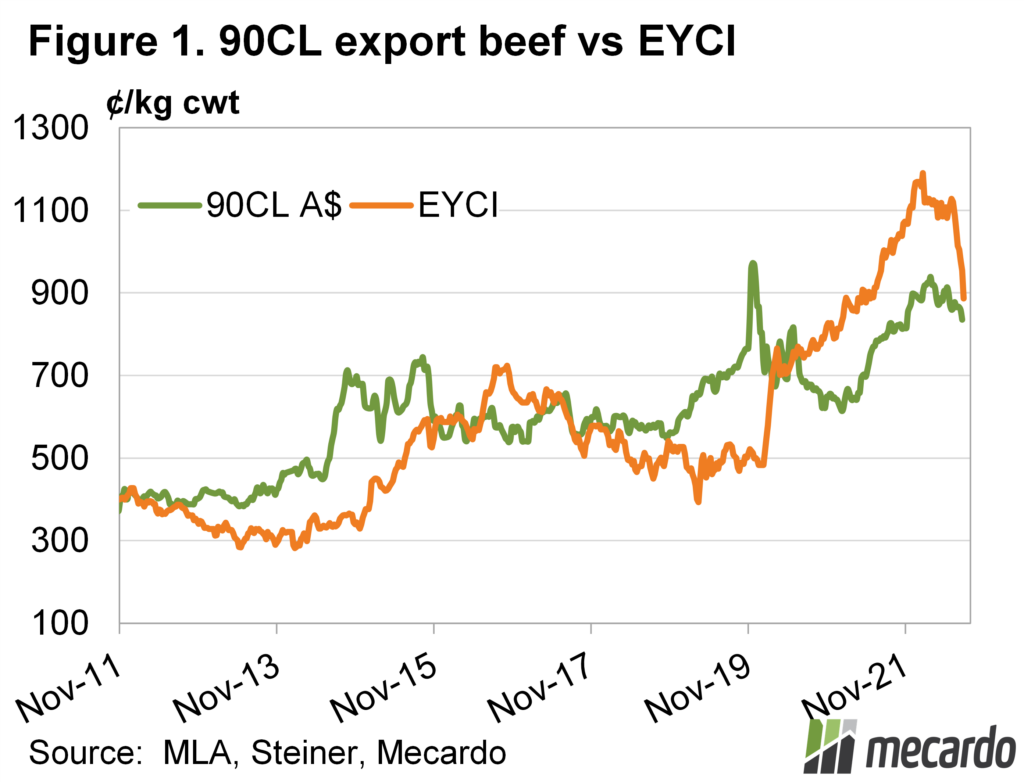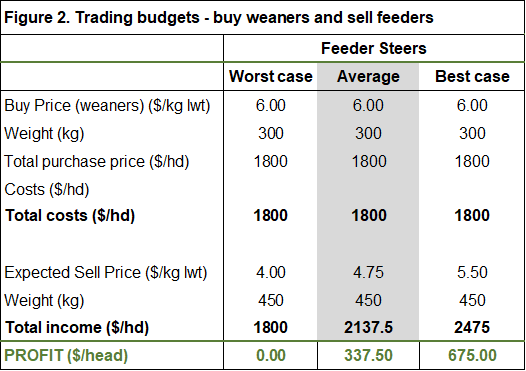While collapsing young cattle prices are making news in a negative way, for those coming into what looks like a good spring growth period, it opens up opportunity. Here we look at what margins might be on offer for those brave enough to jump in during these uncertain times.
Back in June we took a look at the backgrounding trade, where young cattle are bought (or held for cow/calf producers) and grown out to export feeder price. Downside risk was identified as a good reason to cash in weaner steers for the $1,800-$2000 on offer at the time.
In saleyards feeder prices are approaching the worst case value of 450¢/kg lwt in NSW and Victoria, and are lower in Queensland. Export feeder paddock quotes are stronger but have also been on the wane.
It is unclear whether the free fall in young cattle prices is finished, but the bottom should appear soon. The Eastern Young Cattle Indicator (EYCI) is approaching the 90CL export price (figure 1), which has historically been a support level in good season.
Additionally, in charting terms, the EYCI is reaching the point where the rally took off in June 2021. At that time, most producers were very happy with prices, but we know costs have increased in the last year.
Looking at the trade table now we have pulled weaner prices back to 600¢/kg lwt, which brings at 300kg steer back to $1,800/hd. On the sell side the outcomes are more variable thanks to the uncertainty in the market.
Some feeders are still making 550¢/kg lwt, so that is a pretty reasonable best case. The worst case we have pegged at 400¢, but we know that the real worst case is if Foot and Mouth (FMD) hits. At the current average feeder price of 475¢/kg lwt, there is a reasonable margin for those who will have excess grass in the spring.
There is a school of thought that spring growth, combined with waning FMD fears, will see a sharp bounce in young cattle prices, and if that’s the case the time to buy will be soon.
What does it mean?
Young cattle prices are by no means dirt cheap, but there is now some price upside which could make trading a very profitable spring enterprise. Back six weeks ago when we last looked at trading, there was basically no price upside, which made buying a risky proposition. Now it has turned, and upside looks more likely than downside, as fundamentally little had changed in the past two months.
Have any questions or comments?
Key Points
- Falling young cattle prices are opening an opportunity for traders.
- Buying weaners and growing out looks to have more upside than earlier in 2022.
- Cattle prices could bounce quickly as spring growth gets going.
Note: Trading budgets are general in nature and do not include overheads or production costs.
Data sources: MLA, Mecardo














